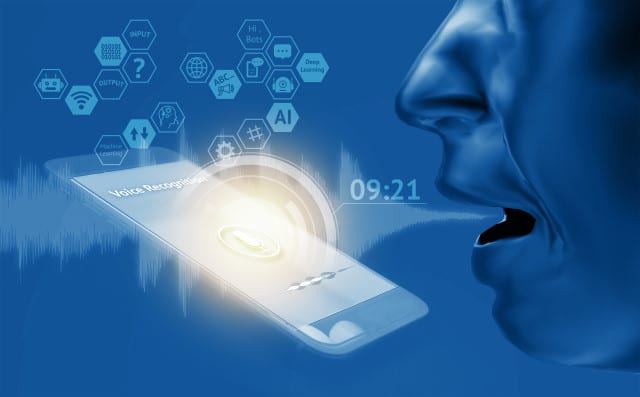Using voice biometrics to stop fraud and deliver a better customer experience

Cybersecurity pros have an unenviable task: helping businesses mitigate risk and keep consumer data safe, all in the midst of a continually evolving threat landscape. Yet even in the face of daily news stories of data breaches, they manage to spot some silver linings. When it comes to digital security, each year brings a bit of good along with the bad, and cybersecurity professionals celebrate the former while reminding us we need to be constantly improving if we want to protect our customers and our companies.
A look back in the rearview shows 2021 was no different. The bad: by the end of September, the U.S. had already seen more data breaches than all of 2020. Even more concerning, a 2021 Forrester survey of individuals responsible for implementing enterprise passwordless authentication, a proven cybersecurity measure that helps defend against these breaches, showed adoption is lagging with half of the respondents less than three months into the process.
The silver lining: that same Forrester survey revealed businesses are taking steps to combat fraud with more than two-thirds of respondents in the process of adopting passwordless authentication for employees or partners. This uptick in businesses deploying passwordless authentication demonstrates their comfort embracing an increasingly common trend in identifying and authenticating individuals with high levels of accuracy, while also greatly improving the customer experience: voice biometrics.
Let’s explore this security approach and its net-positive impact on customer experience through the lens of the contact center, often the first and most frequent customer touchpoint for many businesses.
Voice Biometrics -- An Overview
Most newer smartphones and laptops feature face recognition and fingerprint scanning tools, which has pushed biometric authentication out of dystopian sci-fi literature and into the hands of millions. Such passwordless authentication methods are far superior and more secure than their knowledge-based and token-based authentication predecessors, which are compromised when a fraudster gains access to either.
We’re taught in grade school biology that each human’s fingerprints are unique, which has led them to become a highly secure authentication method. But we may have forgotten another biological truism -- our voices are also uniquely ours, a characteristic highly coveted by security professionals and, increasingly, customer support teams fielding countless inbound calls in places like contact centers.
Here’s how it works: customers preemptively opt in to have their voices recorded to create their unique "voiceprint." Using modern technology including artificial intelligence (AI), each user’s voiceprint captures unique tone, pitch, speed, dialect, and range of other characteristics only identifiable through voice and only unique to that user. This stored voiceprint is then used to accurately identify and authenticate the customer anytime they call the business, adding another highly secure data point to help mitigate fraudsters that is nearly impossible to steal or mimic and, unlike iris or fingerprint biometrics, do not require the individual to be physically present.
Voice Biometrics in the Contact Center
While the applications of voice biometrics are myriad, it is finding swift adoption in contact centers which, due to the large volume of calls and personal data they manage, are frequent targets of fraudsters’ attacks and of customers’ frustrations.
Contact centers have been under significant pressure over the past two years, amplified by the shift of many of their agents to remote work and by the overall uptick in customer support calls. Key performance indicators (KPIs) important to contact centers have been trending in the wrong direction as a result: average abandonment rate, average talk time, average handle time (AHT) and average speed of answer are all moving backward, per a recent study my company issued.
Customers suffer most, and while there is no single culprit, some of this decline can be mitigated through improved security measures that expedite authentication through self-service automation, without compromising (and to the contrary, often improving) security and the overall customer experience.
Voice biometrics help drive efficiencies for businesses and their contact centers; the process integrates directly into the call flow and can fast-track calls down the line to swiftly get customers to the right agents. This reduces time spent authenticating customers (no human agent is needed to authenticate voice), increases IVR call containment, better allocates precious human capital to tasks computers can’t handle, and ultimately leads to better customer experiences with higher levels of security.
The technology has found eager and quick adoption among heavily regulated industries such as healthcare and banking, where strict security mandates have come at both the expense of positive customer experiences and operational efficiency. Upon integration, agents on the front lines of contact centers have found little-to-no learning curve but rather shorter AHT, more freedom to address more complex issues and more satisfied customers.
Voice biometrics isn’t a brand-new technology and it certainly does not represent the skeleton key of cybersecurity. But today the technology can provide contact centers with improved levels of security against threats while vastly improving both the agent and customer experience with little adoption curve. We’re still in the early days of exploring all that’s possible with biometrics and as always, security approaches will continue to evolve alongside the threat landscape and the new approaches taken by hackers. Right now, however, voice biometrics is a silver lining in the fight against fraud, providing companies with a better way to put the customer first by boosting security while streamlining the authentication process to improve CX.
Image credit: Zapp2Photo / Shutterstock
Rui Biscaia is vice president, product management, Talkdesk
